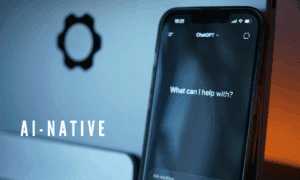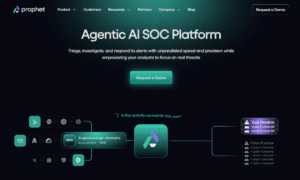How Virtual Simulations and Communication Frameworks Are Elevating Standards in Modern Healthcare
As healthcare continues to evolve in the digital age, the need for innovative, scalable, and effective training solutions is greater than ever. In this transformation, technology is not merely supplementing traditional education—it’s reshaping it. Nursing, as one of the most vital and human-centered professions, is experiencing this change through digital simulation tools and structured communication protocols.
Two standout examples in this space are the Tina Jones Shadow Health Assessment, a virtual simulation tool for nursing students, and AIDET, a widely adopted communication framework in healthcare. These tools represent how digital solutions are enhancing not only clinical competence but also patient satisfaction and organizational performance.
Redefining Clinical Training with Virtual Patients
Simulation-based education has long been used in fields like aviation and engineering, but its impact in healthcare—particularly nursing—has gained momentum in recent years. The Tina Jones Shadow Health Assessment is a prime example of how technology can bridge the gap between classroom knowledge and real-world patient care.
In this virtual platform, students interact with Tina Jones, a digital patient with a complex medical history and evolving clinical scenarios. Unlike static case studies, the Tina Jones simulation is dynamic—requiring students to gather subjective and objective data, assess patient responses, and make informed decisions. This mirrors actual patient interactions while allowing for safe, repeatable practice.
The modules span across multiple systems, including respiratory, cardiovascular, musculoskeletal, and even mental health, offering a holistic view of patient care. Students develop not only technical skills but also soft skills like empathy, listening, and critical thinking—competencies that are increasingly emphasized by healthcare employers and licensing boards.
Furthermore, faculty benefit from built-in assessment tools that track student progress, provide feedback, and identify areas for improvement. These analytics help educators tailor instruction to individual learner needs, making training more efficient and effective.
Expanding Access and Equity in Nursing Education
One of the key advantages of virtual simulations is accessibility. With remote access, students from diverse geographic and economic backgrounds can gain exposure to clinical scenarios that might be unavailable at their institutions. In underserved regions where clinical placements are limited, simulations like Tina Jones offer consistent, high-quality learning experiences.
Moreover, virtual simulations support inclusive training environments. Learners can encounter culturally diverse patients, practice trauma-informed care, and simulate scenarios involving mental health, disabilities, and chronic illness. This level of exposure enhances cultural competence, an essential skill in a globalized healthcare system.
As artificial intelligence (AI) and natural language processing (NLP) technologies continue to evolve, future iterations of platforms like Tina Jones will likely offer even more personalized, adaptive learning environments—further improving outcomes for both learners and the patients they will eventually serve.
Communication as a Core Clinical Skill: The Power of AIDET
While clinical proficiency is critical, it must be complemented by effective communication. Poor communication remains one of the top causes of medical errors, patient dissatisfaction, and care delays. To address this challenge, healthcare institutions have embraced the AIDET framework—a simple yet powerful model that enhances patient-provider interaction.
The AIDET meaning in nursing is centered around five essential steps:
- Acknowledge the patient with a warm, respectful greeting
- Introduce yourself and your role clearly
- Provide an estimated Duration for procedures or delays
- Offer a clear, jargon-free Explanation of what will happen
- Conclude with a sincere Thank You to express appreciation
AIDET is more than a checklist; it’s a mindset. It ensures that every patient—regardless of age, background, or condition—receives consistent, transparent communication. When deployed effectively, it can reduce anxiety, improve understanding, and build trust, especially in high-stress environments like emergency departments or surgical units.
Tangible Outcomes in Patient Care and Organizational Metrics
The benefits of AIDET are not theoretical. Healthcare organizations that have implemented AIDET consistently report measurable improvements in key performance indicators, including:
- Higher HCAHPS (Hospital Consumer Assessment of Healthcare Providers and Systems) scores
- Reduced patient complaints and grievances
- Improved staff morale and team communication
- Increased adherence to care plans and follow-up instructions
These improvements are particularly crucial in value-based care models, where patient experience directly influences reimbursement rates and public reputation.
Additionally, AIDET enhances team dynamics by fostering clear, respectful communication among providers. Nurses who feel equipped to communicate effectively are more confident, more engaged, and less likely to experience burnout.
Technology and Human Touch: Not Mutually Exclusive
One common misconception about digital health tools is that they diminish the human element of care. In reality, tools like Tina Jones and AIDET reinforce empathy, compassion, and patient-centered practices. By reducing administrative burdens and streamlining training, technology allows providers to focus more time and energy on meaningful patient interaction.
Incorporating these tools into nursing curricula and continuing education also ensures alignment with real-world clinical expectations. Students enter the workforce not only ready to assess and treat but also to connect, explain, and reassure—qualities that define exceptional care.
Future Outlook: AI, Telehealth, and the Evolving Role of Nurses
As healthcare continues to integrate telemedicine, remote monitoring, and AI diagnostics, the role of nurses is also expanding. Nurses are increasingly expected to interpret data, operate digital platforms, and lead patient education efforts. This makes early exposure to simulation and structured communication models not just beneficial, but essential.
Platforms like Tina Jones can evolve to integrate telehealth scenarios, chronic disease management protocols, and even multi-patient triage simulations. Meanwhile, AIDET may be adapted for use in digital communication, including virtual visits, chat-based consultations, and patient portals.
Conclusion
The convergence of digital innovation and compassionate care is redefining the nursing profession. The Tina Jones Shadow Health Assessment provides safe, repeatable clinical training grounded in realism. The AIDET framework ensures that communication remains clear, consistent, and empathetic. Together, they prepare today’s nursing students—and tomorrow’s leaders—to deliver high-quality care in an increasingly complex healthcare environment.
By embracing these technologies, we are not just training better nurses—we are building a smarter, more patient-focused healthcare system for all.



































